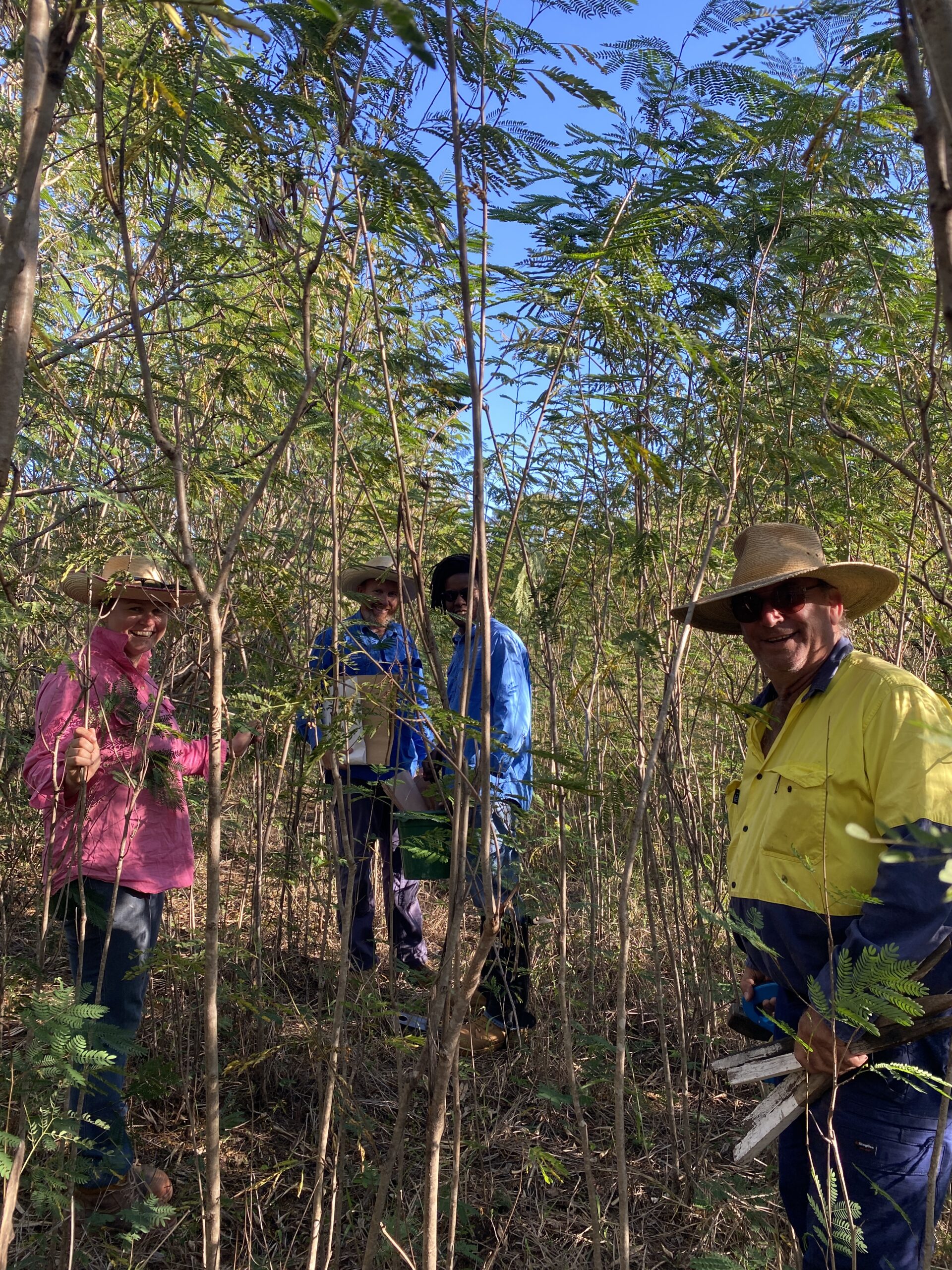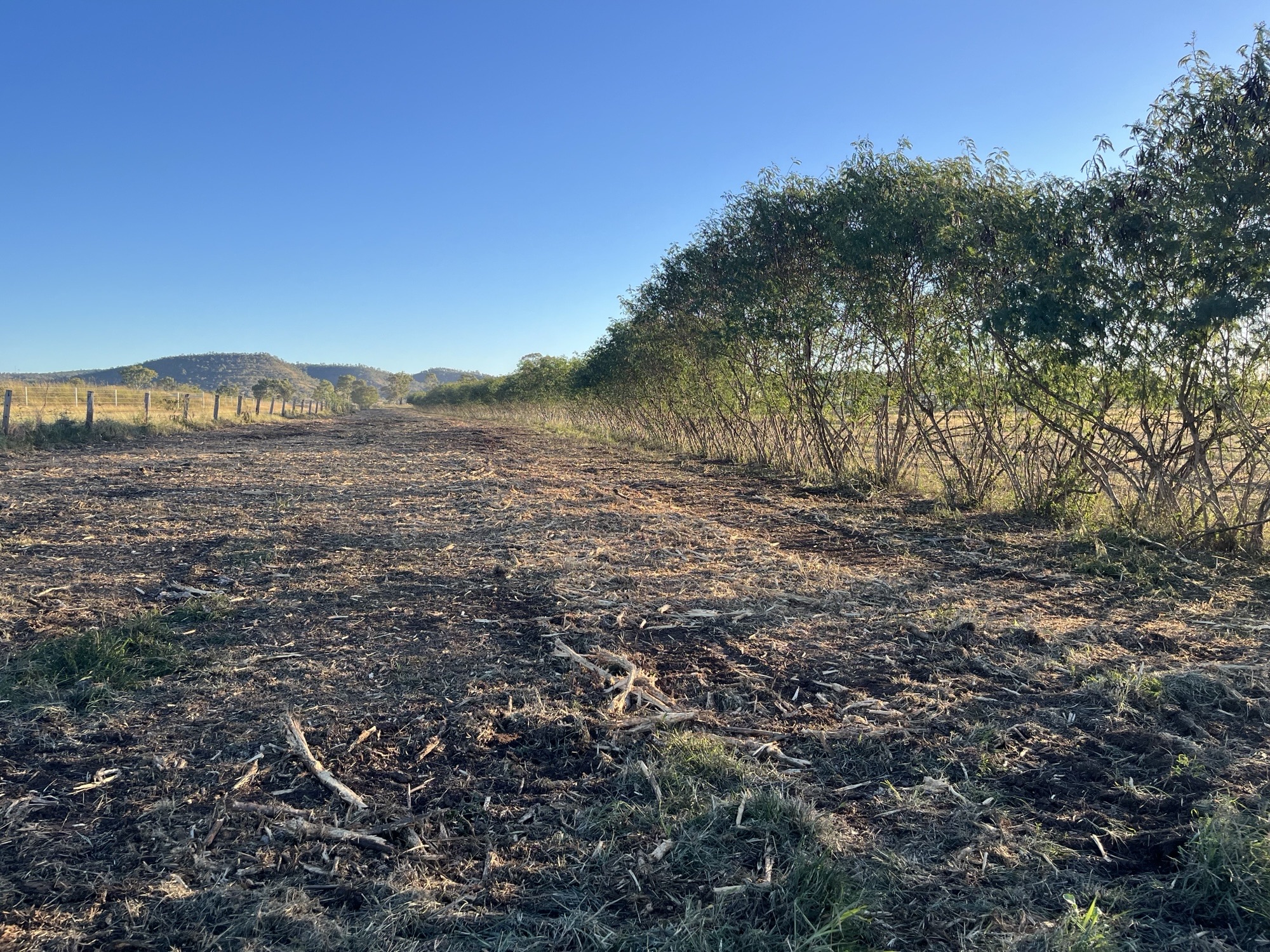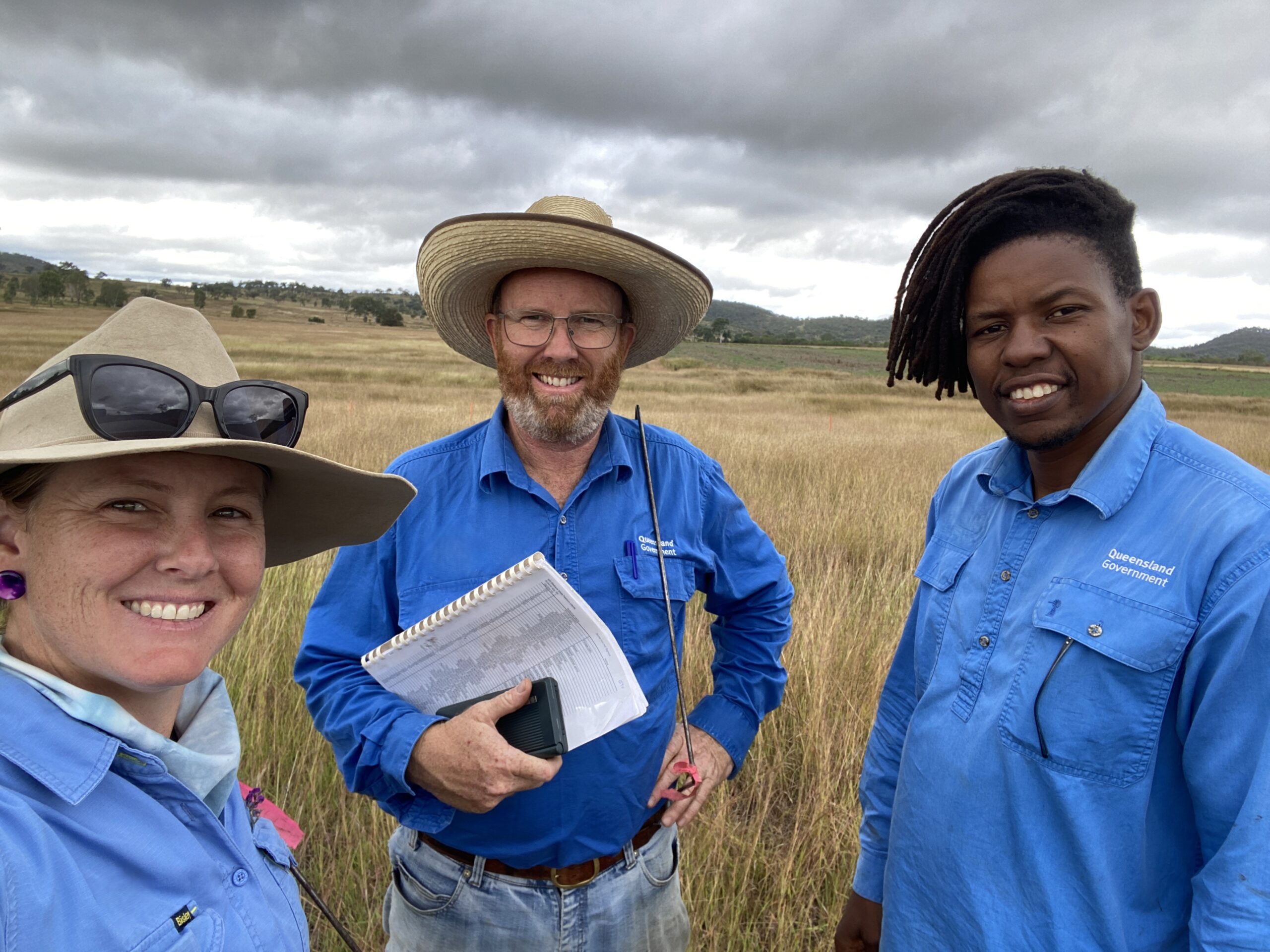Weeds or feed? Breathing new life into unproductive pastures
As many graziers across Queensland know, paddocks that once performed well don’t always stay that way. Two new trials recently initiated by the Department of Primary Industries at Brian Pastures Research Facility, near Gayndah, are exploring how to bring unproductive pastures back into peak condition. One is focused on overgrown leucaena, and the other on tired pastures dominated by Indian couch (Bothriochloa pertusa) and Angleton grass (Dichanthium aristatum).
Renovating leucaena – from towering trees to top class feed
Leucaena is a high-performance forage legume valued for its quality foliage, drought tolerance, and role in reducing methane emissions. When well managed it can increase cattle liveweight gain, stocking rates, and overall profitability of beef businesses. Managing leucaena can be challenging, even for experienced leucaena growers. Keeping height under control is important for a few reasons; growing feed within reach of cattle, trimming induces branching and more leaf production, and tall plants are at high risk of spreading seeds. The management required to maintain leucaena is one reason that more producers have not adopted it, despite having suitable country and the funds to plant it.
The leucaena paddocks at Brian Pastures, some over 45 years old, are examples of the challenges faced by producers to manage leucaena for optimum production. The understanding of leucaena planting and management has evolved since the first plantings at Brian Pastures, which makes these paddocks the perfect candidates to research the renovation of overgrown leucaena.

The ‘Leucaena renovation demonstration trial’ aims to understand the economic and productivity benefits of converting an overgrown leucaena stand to a well-managed paddock with leucaena rows and good inter-row pasture.
Multiple paddocks with existing over-grown leucaena with a dense population of volunteer leucaena plants in the inter-row and a very low grass pasture biomass will be utilised for the trial. The two treatments are:
- Non renovated – existing tall/over-grown leucaena with many volunteer plants growing in the inter-row. Poor grass pasture biomass.
- Renovated – leucaena rows chopped to approximately 40cm high and all volunteer plants in the inter-row mulched to the ground. Any further volunteer plants sprayed with selective herbicide to encourage grass growth.
After renovation the paddocks will be grazed, with data collected on stocking rate, weight gain, grazing period, leucaena and pasture yield, and diet quality. Additional data on methane emissions, soil organic carbon and pasture species composition will also be collected. All costs associated with renovation will be recorded to determine the cost benefit ratio.
In May 2025, pre-renovation biomass assessments were taken in both treatments. The biomass of edible leucaena was measured in three components – biomass growing within cattle reach (below 2m), biomass above cattle reach (above 2m) and biomass of volunteer plants growing outside of the planted rows. This was done by hand plucking leaves and green stems up to 5mm in diameter. Grass biomass was also measured by cutting all plant material to about 5cm high. This data is displayed below.
Average starting biomass of leucaena and grass, across all paddocks.
| Sample | Edible dry matter (kg/ha) |
|---|---|
| Leucaena in rows below 2m high | 123 |
| Leucaena in rows above 2m high | 767 |
| Volunteer leucaena plants outside of rows | 396 |
| Grass | 352 |
On average across all leucaena paddocks, total edible leucaena biomass was 1286kg/ha. Whilst this is a typical yield of edible biomass for leucaena most (60%) of this was above 2m and not accessible to cattle. The other notable result is the low biomass yield (352kg/ha) of the grass. This is due to shading and competition from the overgrown leucaena and volunteer plants.

All paddocks were grazed shortly after pre-renovation measurements were taken. Then the renovation paddocks were mulched with a forestry mulcher. All paddocks will be spelled during winter 2025 and into spring/summer 2025/26 to recover. Cattle will be weighed at entry and after a forage budget. Re-growth of volunteer plants within the inter-rows will be assessed and these will be treated as required.


Upgrading undesirable grasses – a new life for Indian couch and Angleton grass country
Indian couch (Bothriochloa pertusa) and Angleton grass (Dichanthium aristatum) are increasingly dominant in rundown pastures. While these grasses offer good ground cover, they are generally low in biomass and so provide poor grazing benefit to cattle. Good grazing management with rotational grazing and spelling can help improve the condition of pastures dominated by these grasses, however this is generally a very slow process.
The ‘Undesirable grass trial’ aims to find the best method of turning a paddock of undesirable grasses into a paddock of pasture with productive legumes and grasses.
The treatments incorporate strategies that range from low input and low cost to increased input and cost where a new pasture is planted. Eight different renovation methods (summarised in the table below) are being tested in replicated plots that are 10 x 20m. As results are generated from this plot trial, a larger paddock-scale trial will begin where cattle liveweight gain will be measured.
Treatments in the Undesirable grass plot trial
| No | Treatment | Details |
|---|---|---|
| 1 | Control | Untouched existing pasture |
| 2 | Burn, re-seed | Burn in September/October, broadcast new pasture mix into ash bed. |
| 3 | Herbicide fallow, re-seed | Fallow for about 6 months, using several applications of herbicide to control pasture and weed regrowth, plant new pasture mix. |
| 4 | Cultivation fallow, re-seed | Fallow for about 6 months, using several mechanical cultivations to control pasture and weed regrowth, plant new pasture mix. |
| 5 | Offset plough, re-seed | Single pass offset plough in September/October, plant new pasture mix. |
| 6 | Annual legume forage, incorporate biomass (green mulch), re-seed | Fallow 6 months using a combination of chemical applications and mechanical operations. Sow Lablab in summer, apply selective grass herbicide, fully incorporate lablab biomass at flowering with cultivation. Fallow through to the following summer, plant new pasture mix. |
| 7 | Annual legume forage, harvest biomass (to simulate grazing), re-seed | Using a combination of chemical applications and mechanical operations. Sow Lablab in summer, apply selective grass herbicide, harvest lablab biomass from plot at flowering. Cultivate any remaining material after harvest. Fallow through to the following summer, plant new pasture mix. |
| 8 | Fertiliser only | Fertilise existing pasture (based on soil test) every year at start of wet season. |
In May 2025, a paddock was selected for the trial. The paddock was previously farmed with forages and grain crops but returned to pasture many years ago. Initial pasture assessments (biomass yield and species composition) were taken and this data is still being processed.

Impact for Queensland graziers
These trials are about generating positive outcomes for Queensland graziers. Whether it’s reviving underperforming leucaena paddocks or reclaiming grasslands dominated by low-value species, the research is designed to answer a simple but crucial question:
“Can we make these paddocks more productive, more profitable, and more sustainable?”
As the trials progress, graziers will be able to learn about outcomes at field days and in reports to help guide their own decisions. Stay tuned for results – and practical tools to help you get more from your pasture investment.
This research is undertaken by the Central Queensland pasture team in collaboration with the staff at Brian Pastures Research Facility.
The Queensland Pasture Resilience Program is a partnership between the Department of Primary Industries, Meat & Livestock Australia and the Australian Government through the MLA Donor Company..